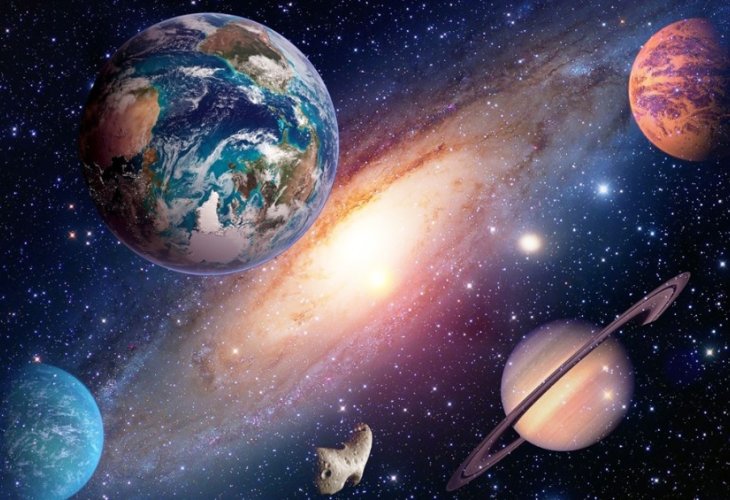Wonders of Creation
The Fine-Tuned Earth: Why Our Planet Is Perfectly Designed for Life
Discover the extraordinary conditions that make Earth uniquely habitable, from its distance from the Sun to the role of the Moon and Jupiter
 (Photo: shutterstock)
(Photo: shutterstock)
The Torah teaches us that in the beginning, the world was tohu va’vohu (chaotic and void) until God created and arranged the conditions for life: He separated the waters, revealed the dry land, created plants, set the luminaries in our solar system, and prepared the Earth for us — a planet that initially could not support life.
Many people are unaware of just how astonishing our world truly is. Some assume that, because of the vast number of stars in the universe, many other planets might also support life.
In the early 1970s, scientists believed that all that was needed for life was for a planet to be the right distance from its sun. As research advanced, it became clear that life requires dozens of extremely precise conditions, and if even one of them is absent, life cannot exist.
This growing field of research is called astrobiology. Astrobiologists have discovered that, even under “optimistic” assumptions, more than 50 factors must align simultaneously for a planet to support life. As most of the galaxy is hostile to life due to lethal radiation, this makes Earth an extraordinarily rare place in the universe.
Prof. Nissim Vidal, an Israeli astrophysicist who became religious after working at the Royal Greenwich Observatory in England, presents many of these astonishing findings in his book The Army of the Heavens: Astronomy.
Following are several of the conditions scientists have identified, each illustrating the miraculous precision with which Earth was designed. As the verse says: “He performs wonders beyond comprehension, and miracles without number” (Iyov 9:10).
1. Location in the Galaxy
Earth must be located at a safe distance from the galactic center. The dense stars near the center emit dangerous radiation that would make life impossible, and therefore if Earth were closer, the radiation alone would have destroyed any chance of life.
2. Distance from the Sun
Earth is about 150 million kilometers from the Sun. If it were even 5–15% closer or farther away, all water would either freeze solid or evaporate. The Sun also has protective layers that prevent deadly gamma rays from reaching Earth.
Our planet’s average temperature of 20–30°C (68–86°F) is ideal for sustaining life. Other planets are either scorching hot or freezing cold — on the Moon, for example, temperatures swing to 120°C (248°F).
3. Stable Solar Radiation
Most stars in the universe do not emit stable energy. For life to exist, the Sun’s output must remain constant. Even a short dip in energy would freeze Earth permanently, as the ice would reflect sunlight and prevent thawing. Likewise, a brief surge in energy would boil away the oceans and strip the atmosphere.
Deep within the Sun is a special “radiation zone” that regulates pressure in its core and keeps nuclear fusion stable. Without it, the Sun would have exploded long ago.
4. The Van Allen Belts
Discovered in 1958, Earth’s magnetic field captures radioactive particles from the Sun in two protective belts: one 1,000–5,000 km away, the other 15,000–25,000 km away. Without these belts, harmful particles would bombard Earth and destroy life.
5. Size of the Earth and Sun
Both Earth and the Sun must have the right mass. If the Sun were larger, it would emit deadly ultraviolet radiation. If smaller, Earth would have to orbit dangerously close, leading to tidal locking (like the Moon, where one side always faces Earth). That would leave one side boiling hot and the other frozen, with the atmosphere stripped away.
Earth itself must also be the right size. If it was too small, it could not hold an atmosphere, and if too large, it would pull in destructive asteroids.
6. The Moon’s Crucial Role
Our Moon is unusually large and close. Unlike Mars’ tiny moons, Earth’s Moon stabilizes our planet’s tilt at 23.5°. Without it, Earth’s tilt would fluctuate wildly, producing catastrophic climate swings. If the tilt collapsed entirely, one side of Earth would face the Sun permanently, and life would be impossible.
7. Jupiter the Protector
Surprisingly, life on Earth also depends on Jupiter. Its immense gravity pulls in or deflects asteroids that would otherwise bombard Earth. Without Jupiter, Earth would face constant catastrophic impacts, but if Jupiter were too big or too close, it would destabilize the solar system itself.
8. Earth’s Rotation Speed
Earth rotates once every 24 hours. If it spun slower — for example every 240 hours, then days and nights would last 120 hours each, causing plants to burn in the long days and freeze in the long nights, and life would collapse.
9. Tilt of Earth’s Axis
Earth’s tilt of 23.5° creates the seasons. Without it, the world would be a lifeless desert, with massive ice caps at the poles.
10. Gravity’s Perfect Balance
Gravity anchors us to the ground. If it was too weak, we would float away, but if too strong, life would be crushed. Earth’s gravity is finely tuned, depending not only on the law of gravitation but also on Earth’s precise mass.
The world is like a finely built tower, with humanity placed at the top. If one floor was removed, the entire structure would collapse. As King David declared: “How manifold are Your works, O Lord! In wisdom You made them all; the Earth is full of Your creations” (Tehillim 104:24).

